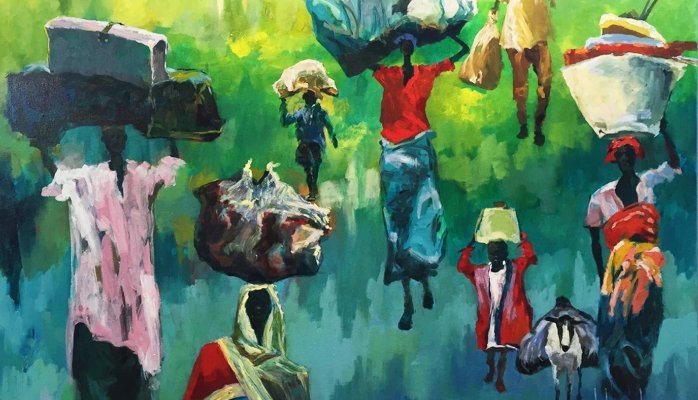The Struggles of Contemporary Artists in Nigeria
Nigeria, a vibrant and culturally rich country, boasts a long history of artistic expression that spans traditional, colonial, and contemporary periods. While the nation has produced globally renowned artists, contemporary artists in Nigeria face a myriad of challenges that shape and influence their artistic journeys. This article aims to delve into the struggles faced by contemporary artists in Nigeria, shedding light on the complexities they navigate in pursuit of creative expression, recognition, and sustainable careers.
Economic Constraints:
Contemporary artists in Nigeria often grapple with economic challenges that impact their ability to create and exhibit their work. The cost of art materials, studio space, and exhibition fees can be prohibitively high, hindering artists from fully realizing their creative potential. The lack of financial support and patronage exacerbates these challenges, making it difficult for artists to sustain themselves solely through their art.
Limited Institutional Support:
Institutional support for the arts in Nigeria is often inadequate, with a dearth of government funding and resources dedicated to fostering a thriving contemporary art scene. The absence of well-established art institutions, galleries, and museums further hampers artists' opportunities to showcase their work and engage with a broader audience. This lack of infrastructure limits the exposure and recognition of contemporary Nigerian artists on both the national and international stages.
Cultural and Societal Pressures:
The deeply ingrained cultural and societal norms in Nigeria can pose challenges for contemporary artists exploring unconventional or provocative themes. Artists may face resistance from conservative elements in society, and there may be a reluctance to embrace art that challenges established norms. This cultural conservatism can stifle artistic expression and limit the diversity of voices represented in the contemporary art scene.
Globalization and Identity:
As Nigeria becomes more connected to the global art scene, contemporary artists grapple with questions of identity and authenticity. Balancing global trends and influences with the need to maintain a unique Nigerian voice can be a delicate task. The pressure to conform to international expectations and styles may compromise the authenticity of an artist's work, making it challenging to carve out a distinct niche in the global art landscape.
Lack of Art Education and Training:
While Nigeria has a rich artistic heritage, there is often a lack of structured art education and training opportunities for emerging contemporary artists. Access to quality art education can be limited, and aspiring artists may struggle to develop their skills and receive mentorship. This gap in education can hinder the growth of a vibrant and dynamic contemporary art scene.
Inadequate Art Market:
The absence of a robust art market in Nigeria can impede the commercial success of contemporary artists. Limited opportunities for art sales, the prevalence of informal art markets, and challenges in establishing fair pricing contribute to financial instability for many artists. Without a well-functioning art market, artists may find it difficult to sustain their practice and make a living from their work.
Conclusion
Contemporary artists in Nigeria face a complex web of challenges that require thoughtful and multifaceted solutions. From economic constraints to cultural pressures, the struggles of these artists reflect broader issues within the Nigerian art ecosystem. Efforts to address these challenges should include increased institutional support, investment in art education, fostering a vibrant art market, and promoting cultural inclusivity. By recognizing and addressing these struggles, Nigeria can unlock the full potential of its contemporary art scene, contributing to a more diverse and globally impactful cultural landscape.

